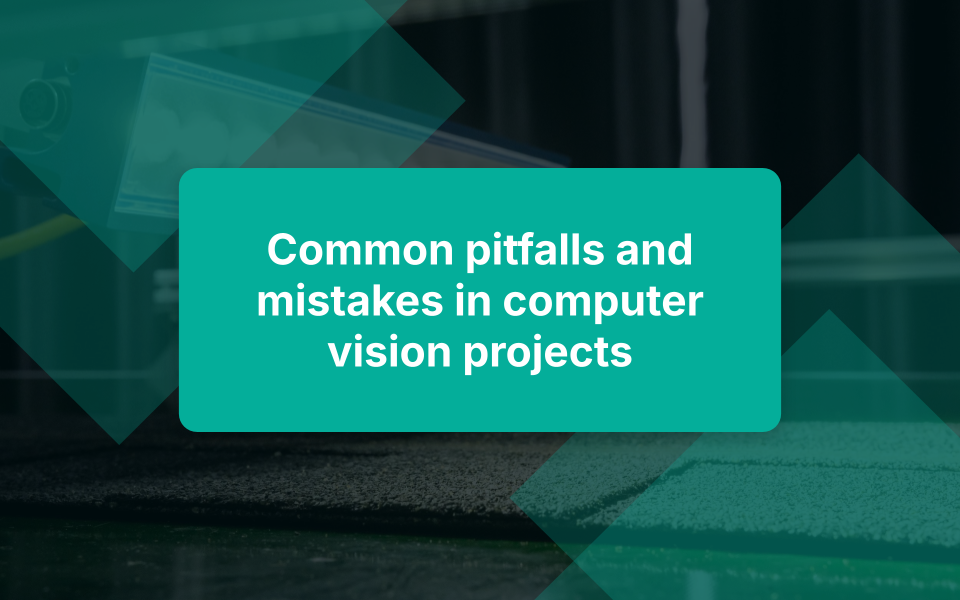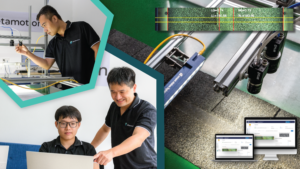This article draws inspiration from a collaborative LinkedIn discussion on common pitfalls in computer vision projects. Explore the original insights and contributions here.
1. Data quality:
The foundation of any successful computer vision project is high-quality, well-curated data. We know that perfect data leads to perfect products — but achieving this requires more than just quantity.
Representation: Your data must mirror the problem domain with precision, ensuring balanced datasets that prevent bias and improve generalizability.
Annotation: Perfect data begins with flawless labeling. Cutting-edge tools like synthetic data generation and semantic teaching can automate this process, minimizing human error while enhancing speed and accuracy.
Cleanliness: Noise and inconsistencies must be systematically eliminated through preprocessing and validation, ensuring a polished, reliable dataset for training.
In other words, perfect data doesn’t just happen — it’s a process of meticulous refinement, innovative tools, and rigorous quality control. The result? Models that deliver real-world reliability and extraordinary outcomes.
2. Model selection
Surprising truth: the best model for your computer vision project might not even exist yet. Instead of picking the “right” model from existing options, the future of model selection lies in adaptability, modularity, and co-evolution with your data.
Dynamic Models: Why settle for a static model? Adaptive models that evolve with your data and learn in real-time are becoming essential as data shifts and grows. The focus should shift from “selecting” a model to creating pipelines that allow ongoing learning and refinement.
Composable Architectures: I would suggest not to put all your eggs in one model. A hybrid approach — leveraging smaller, specialized models for subtasks and combining them — can outperform even the most advanced singular architectures. Think of it as creating an ensemble of specialists rather than relying on a generalist.
Beyond Accuracy: Traditional metrics are often shortsighted. I would prioritize models that offer transparency, explainability, and robustness to unseen data, even if they sacrifice a percentage point in benchmark accuracy. Models that align with your ethical and operational goals may deliver longer-term value.
I think the future isn’t about picking the best model — it’s about creating an ecosystem of models that collaborate, evolve, and optimize over time. Your model isn’t a solution; it’s a partner in innovation.
3. Evaluation Metrics
Here’s the deal: The most dangerous metrics aren’t just the wrong ones — they’re the “right” ones applied in the wrong way. Evaluation isn’t just about picking the right metrics; it’s about understanding what your metrics aren’t telling you.
Metrics like precision and recall seem straightforward, but focusing on one often masks trade-offs in another. For example, optimizing for high recall might inflate false positives, which could be disastrous in real-world applications like defect detection or medical imaging.
So instead of chasing “better” metrics, challenge your team to ask: What does this metric ignore? A metric isn’t the final word; it’s a flashlight that illuminates one part of the problem while leaving others in the dark.
4. Deployment Issues
In my experience, the biggest deployment failures often stem not from technical problems but from underestimating the human factor. While hardware limitations, software dependencies, and latency issues get the spotlight, the real challenge lies in ensuring the solution is intuitive, adaptable, and trusted by its users.
A technically sound model that’s confusing or impractical for operators can lead to poor adoption, while overlooked environmental factors — like lighting conditions or sensor positioning — can derail performance in the real world. Deployment should be dynamic, with systems designed for continuous learning and adaptability, ensuring relevance as conditions evolve.
Most importantly, deployment isn’t the end, it’s the beginning of a feedback loop. Capturing user insights, error logs, and real-world performance data allows for constant refinement. Ultimately, successful deployment is about building systems that empower users, creating trust and reliability in their unique context.
5. Ethical Concerns
Ethics in computer vision often feels abstract, but let’s ground it in quality control. Imagine a defect detection system trained on biased data — what if it unfairly flags products from a specific production line or material type? Not only does this create unnecessary waste, but it also damages trust in the system. Then there’s the question of privacy: sensitive production data or intellectual property could be at risk if safeguards aren’t in place. These are real-world ethical challenges in quality control. To address them, you need balanced datasets, transparency in decision-making, and ongoing audits to catch unintended consequences. Ethics isn’t just a box to check — it’s essential for building trust, reducing waste, and ensuring that quality control systems truly deliver on their promise.
6. Here’s What Else to Consider
The success of a computer vision project often hinges on what happens outside the model itself. For example, collaboration across teams — engineers, domain experts, and end-users — is often overlooked but critical. A model trained in isolation, without input from those who’ll actually use it, can miss the mark entirely.
Then there’s the long-term lifecycle of your project. Models aren’t “set and forget”; data evolves, systems age, and new challenges arise. Building for adaptability, with ongoing retraining pipelines and feedback loops, can future-proof your solution.
And let’s not forget the human element. The best AI systems empower people — they don’t replace them. Whether it’s automating repetitive tasks or enhancing decision-making, a project’s true success lies in how it integrates with human workflows, creating synergy instead of resistance.





